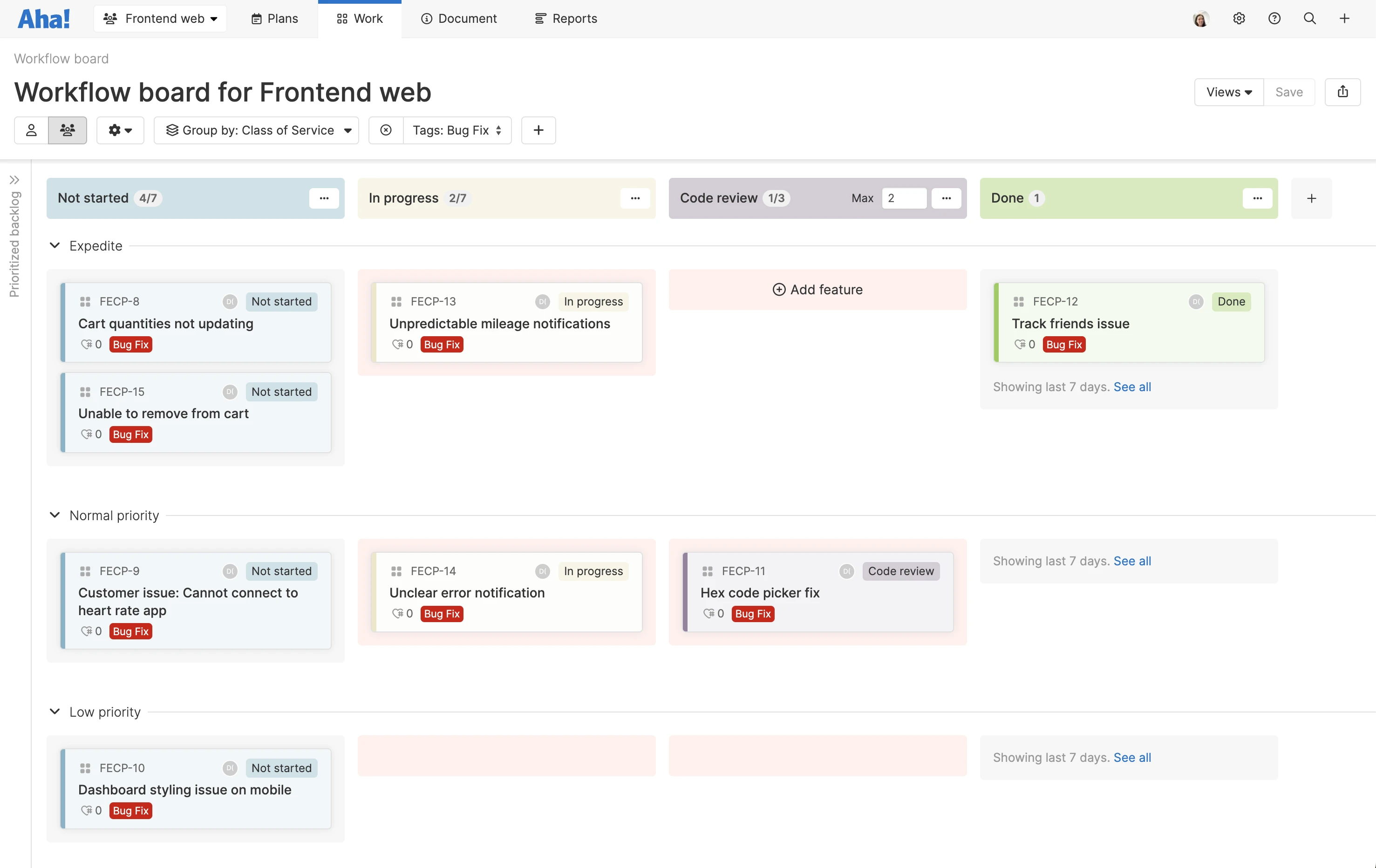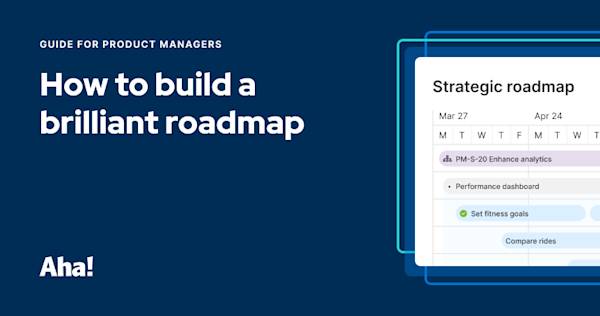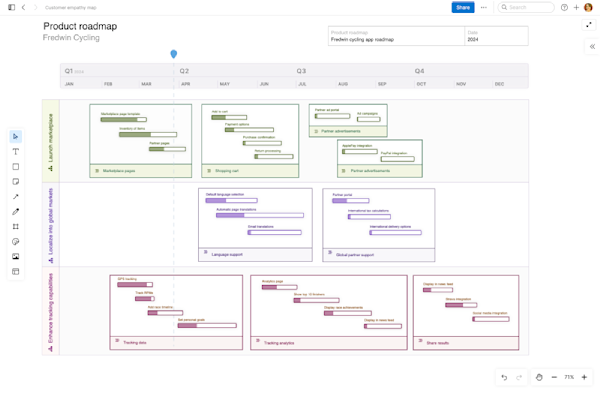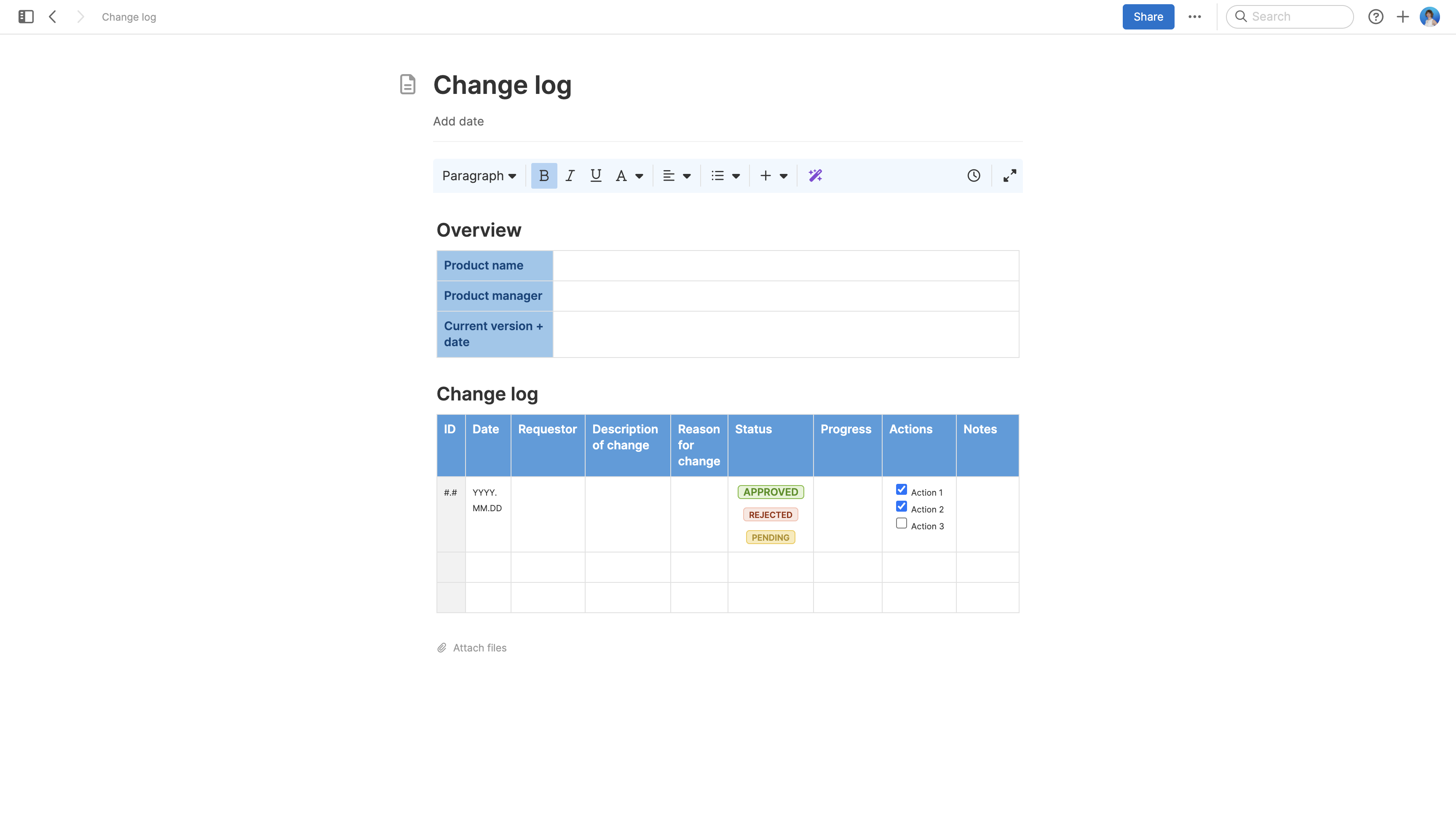What is issue tracking?
Last updated: September 2024
Issue tracking is the process of managing software bugs that users encounter when interacting with a product. An issue, then, refers to a code error that creates problem for the user. For example, this might be a broken button, authentication issue, or unintended user experience.
But issue tracking involves more than just keeping a running list of defects. Many agile development teams include highly relevant information about technical debt, refactoring, and other suggestions in their list of issues. If you keep track of both urgent fixes and opportunities to improve the product in a single place, it becomes easier to prioritize how you will improve the overall user experience — one issue at a time.
A great agile team needs the right issue-tracking tools — try Aha! Develop.
So where do issues come from? Many product development teams identify issues via customer feedback. (In other words, when a user reaches out for help with a specific problem or error message.) Issues like these can come from a variety of sources, from tickets the customer support team creates to social media messages from users. If your company has a robust idea management system in place, issues can also come directly from users via ideas portals, in-app community feedback, or empathy sessions.
But it is also useful to find (and resolve) issues before they reach customers in the first place. Debugging, QA testing, and beta releases are all opportunities for the development team to spot problems. Of course, you should also be vigilant about looking for bugs or code weaknesses at all stages of the agile product development process. If you are able to quickly ship code changes at any time, you can continuously release improvements to customers. After all, the ultimate goal of issue tracking is to iteratively improve the user experience and deliver a product that customers love.
Let's explore this concept a bit further. Use the links below to jump ahead to any section:
What is an issue-tracking system?
An issue-tracking system is an application or tool that helps development teams manage and address issues. Popular issue-tracking tools typically support agile methodologies — such as the Scaled Agile Framework® and The Aha! Framework for product development — as well as project management capabilities. They are one of many tools that exist to help teams stay aligned and collaborate faster throughout the product development process. Some teams choose to organize or sort issues into different levels, such as epics, user stories, and subtasks.

This is an example of a workflow board in Aha! Develop. Issues have a "Bug fix" label, and user stories display in columns that reflect their status. The engineering team can clearly see technical issues to address alongside new work to complete.
Although developers are ultimately responsible for tracking and fixing errors in the code, issue tracking is vital to the entire product development team. Everyone from product and project management to product marketing and operations relies on you to create and refine a product that delights customers. Depending on the structure of your organization and the type of issue that needs fixing, other groups (such as customer support or design) might also need to be involved in identifying and rectifying the issue.
Related:




